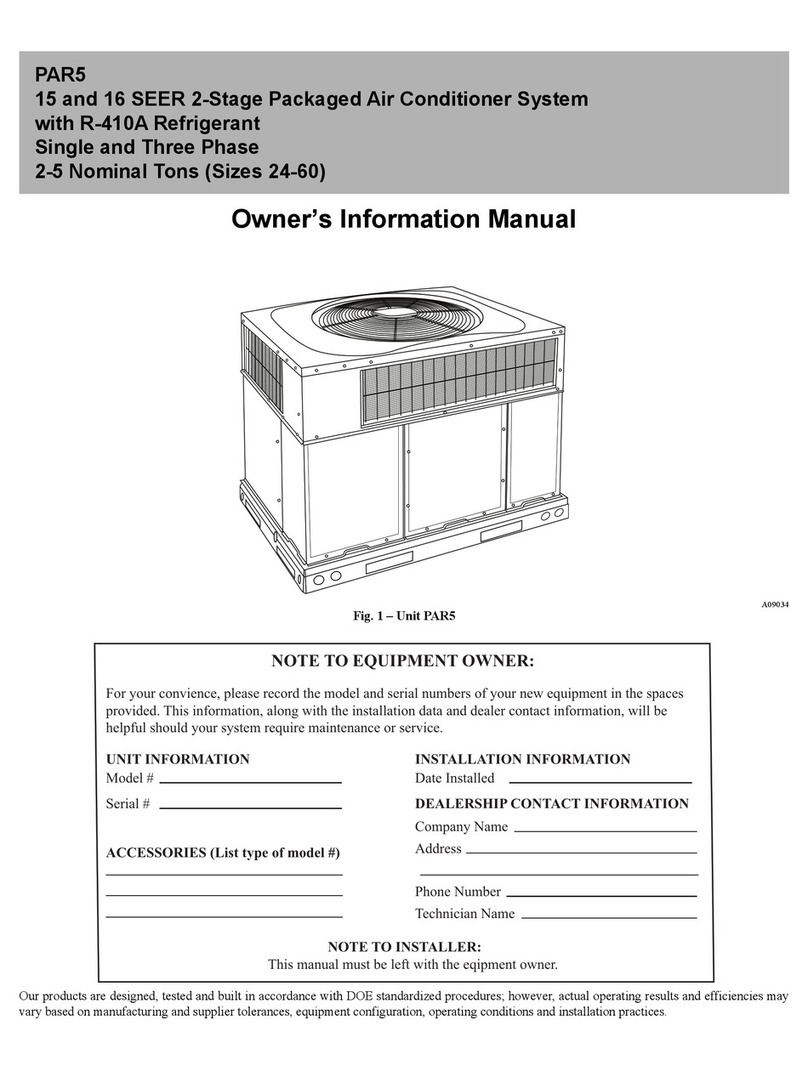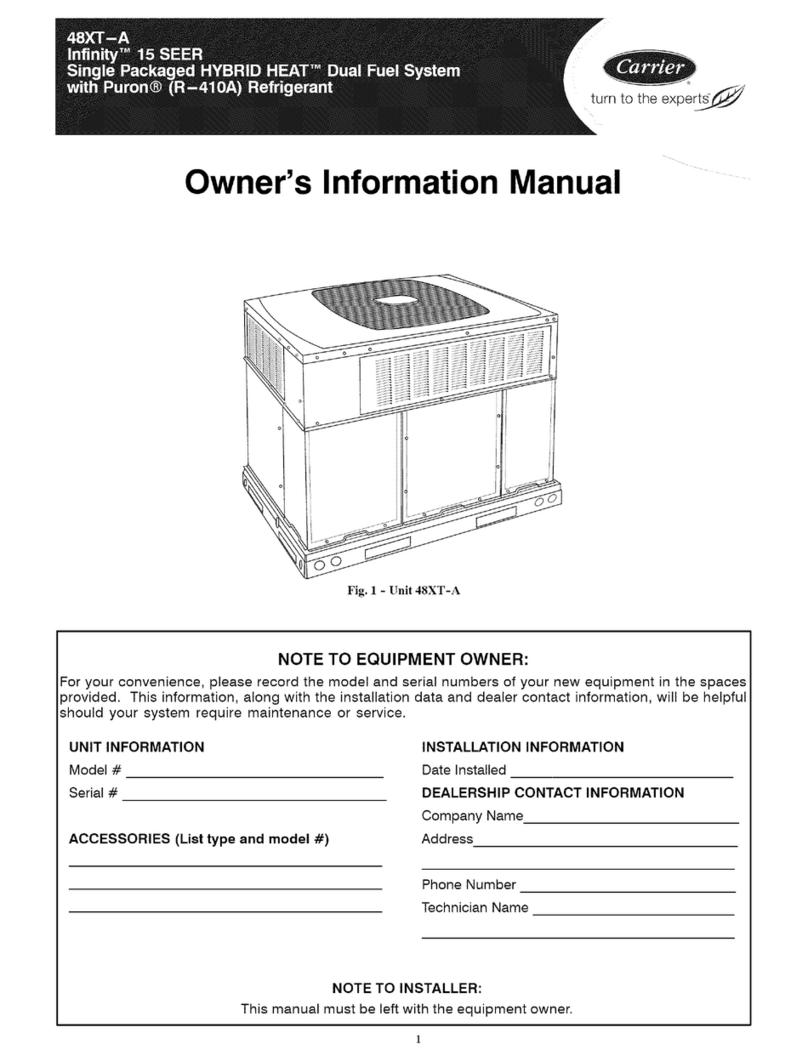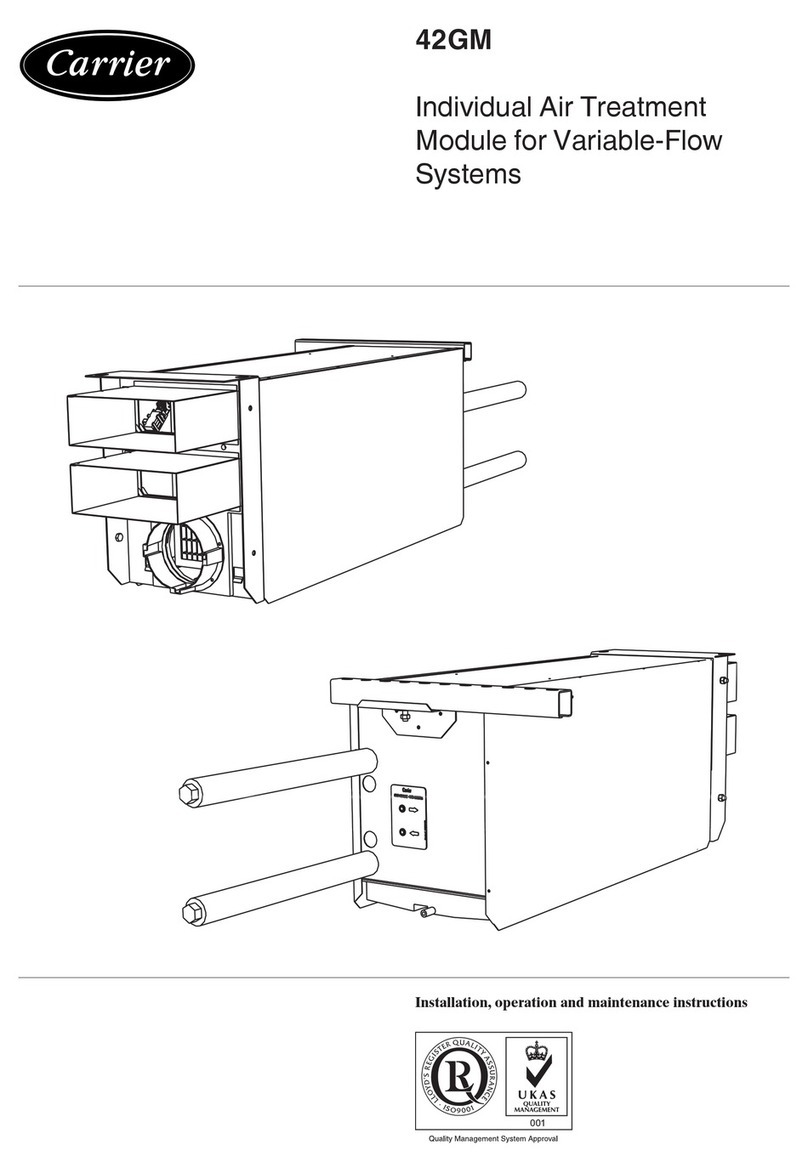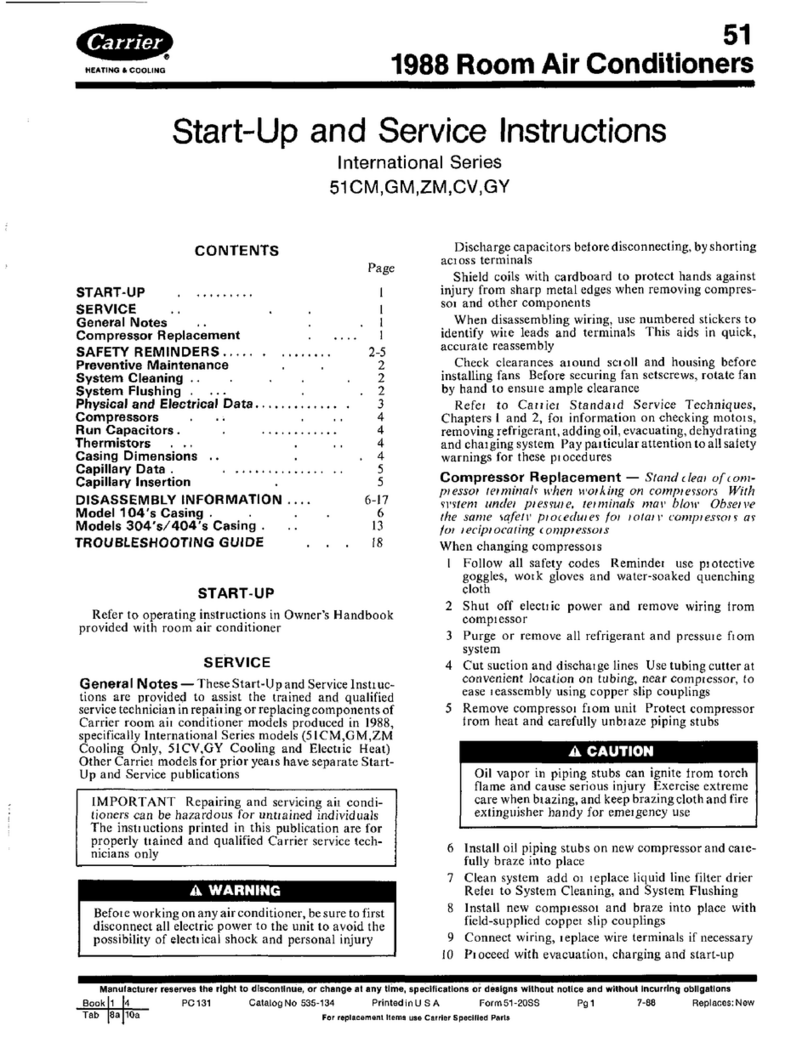Carrier 53SSA009 1 Series User manual
Other Carrier Air Conditioner manuals
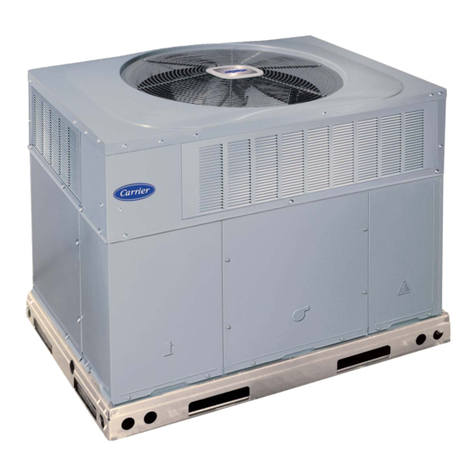
Carrier
Carrier 48GS(N)-2SB Instruction Manual

Carrier
Carrier 42TOVG010 User manual

Carrier
Carrier 48FC Series User guide
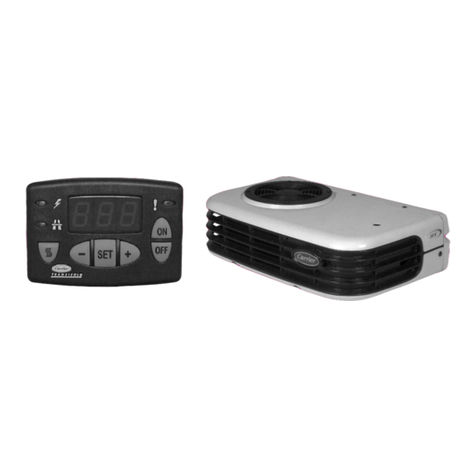
Carrier
Carrier X Series User manual
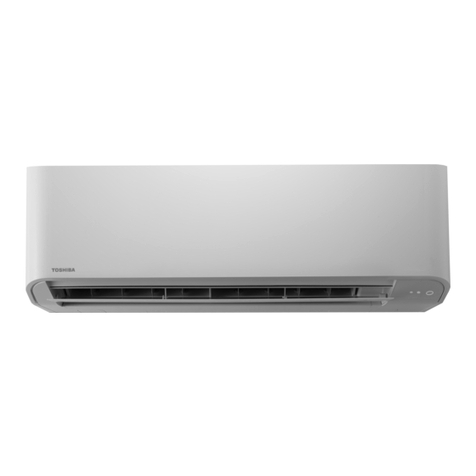
Carrier
Carrier TOSHIBA MMU-UP0071HP-UL User manual
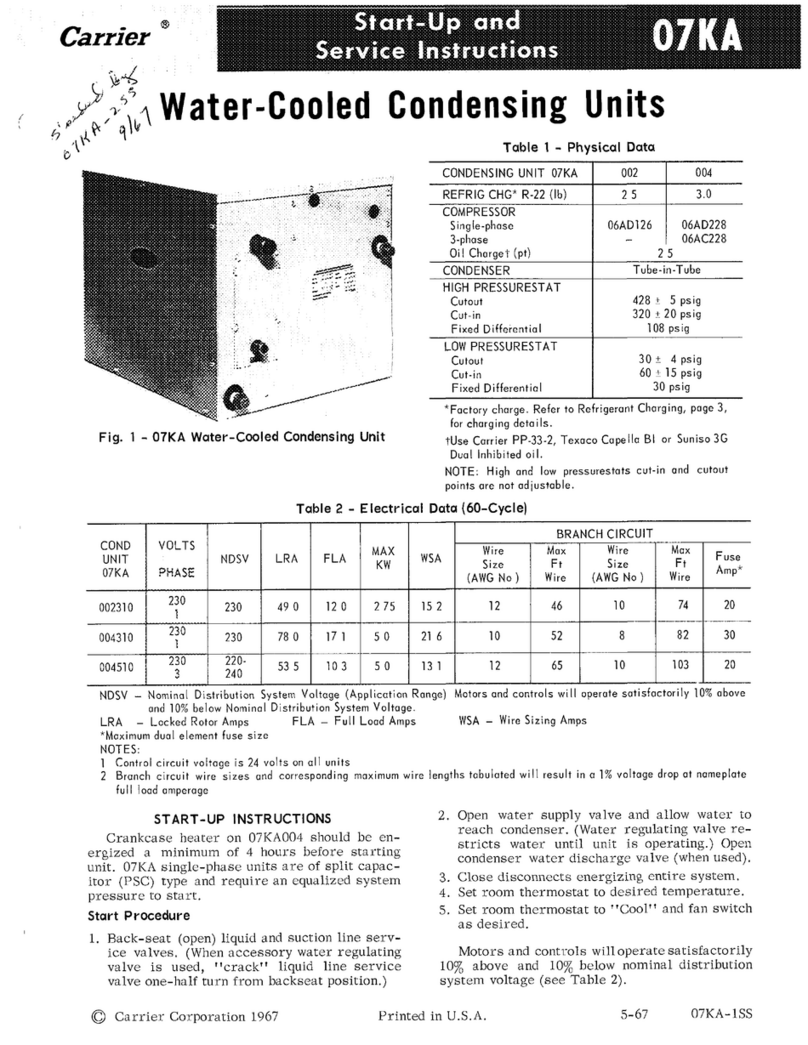
Carrier
Carrier 07KA Operating instructions
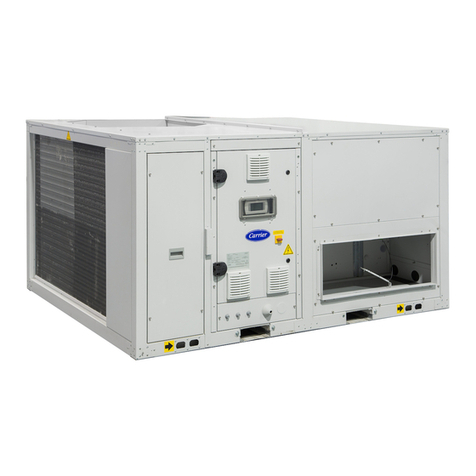
Carrier
Carrier 50FF 020 Manual
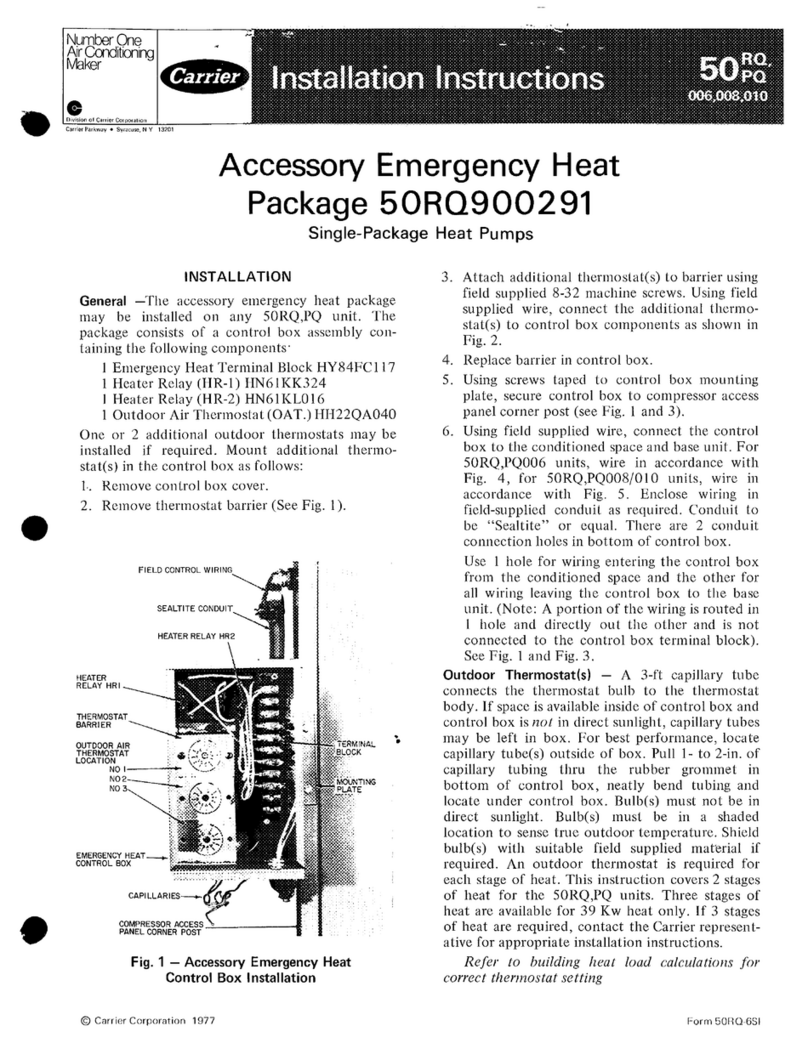
Carrier
Carrier 50RQ900291 User manual
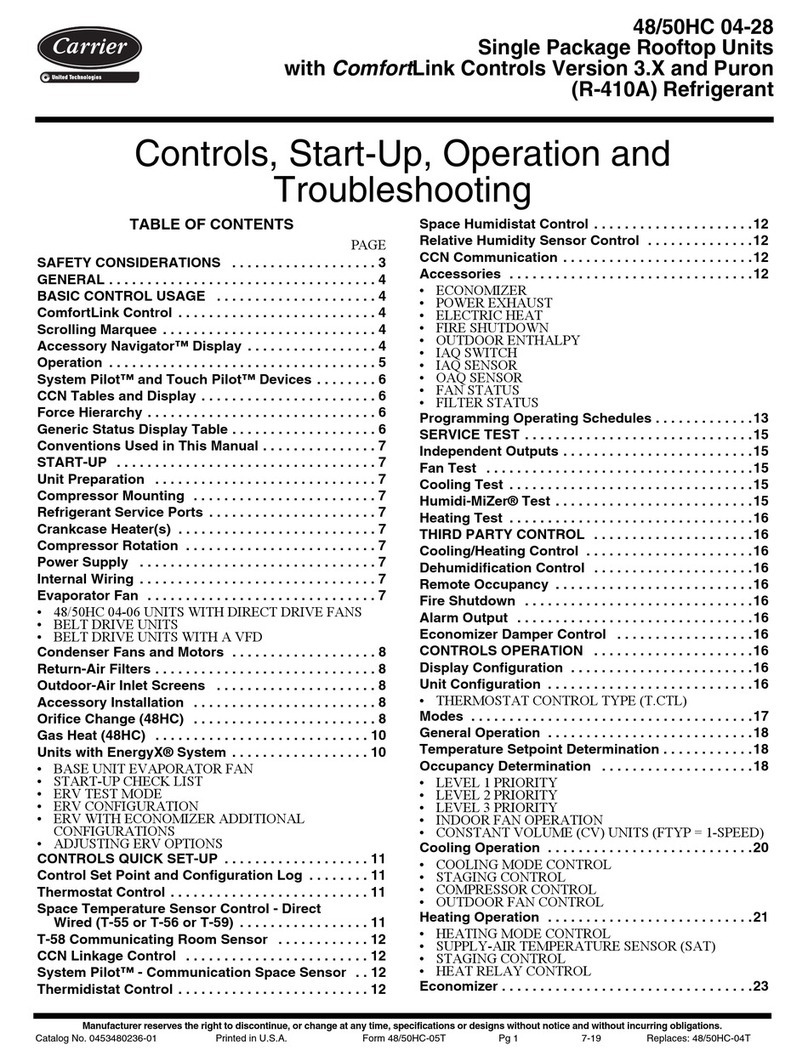
Carrier
Carrier 48HC 04-28 User guide
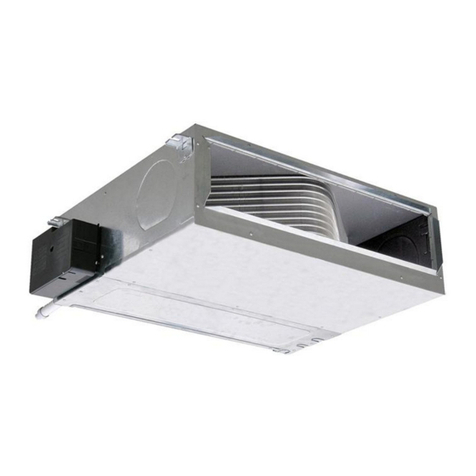
Carrier
Carrier 42 DWC Series User manual

Carrier
Carrier 51CV/GY User manual
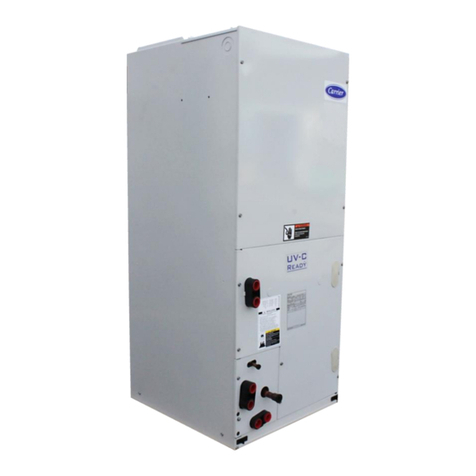
Carrier
Carrier FB4P User manual

Carrier
Carrier 51ZF User manual
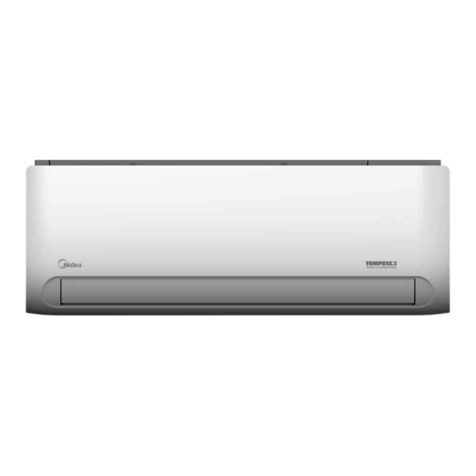
Carrier
Carrier DLFEHA User manual
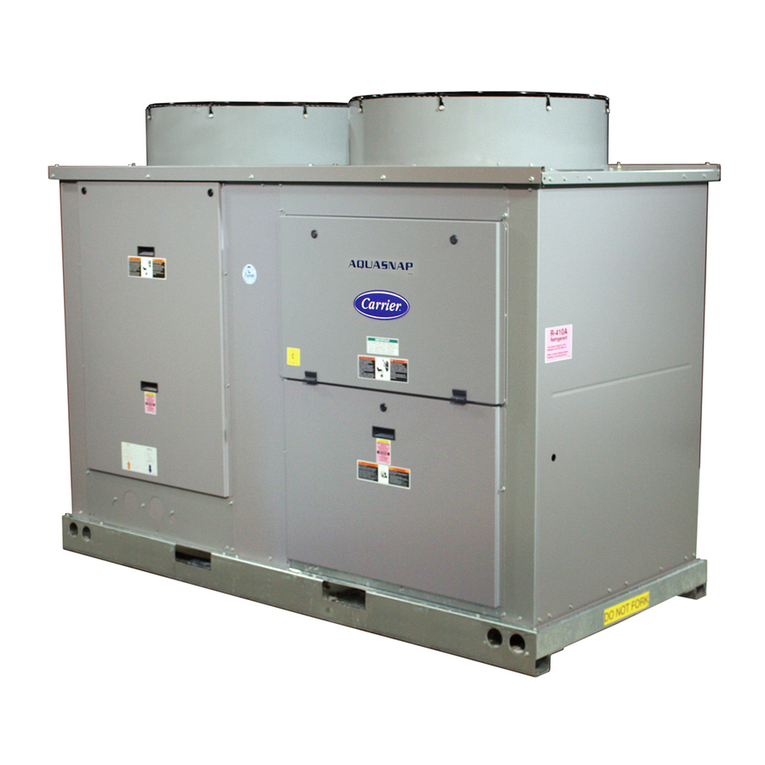
Carrier
Carrier AQUASNAP AIR COOLED CHILLERS WITH COMFORTLINK CONTROLS... Operation manual

Carrier
Carrier 51QPD009N Series User manual

Carrier
Carrier DC Series User manual
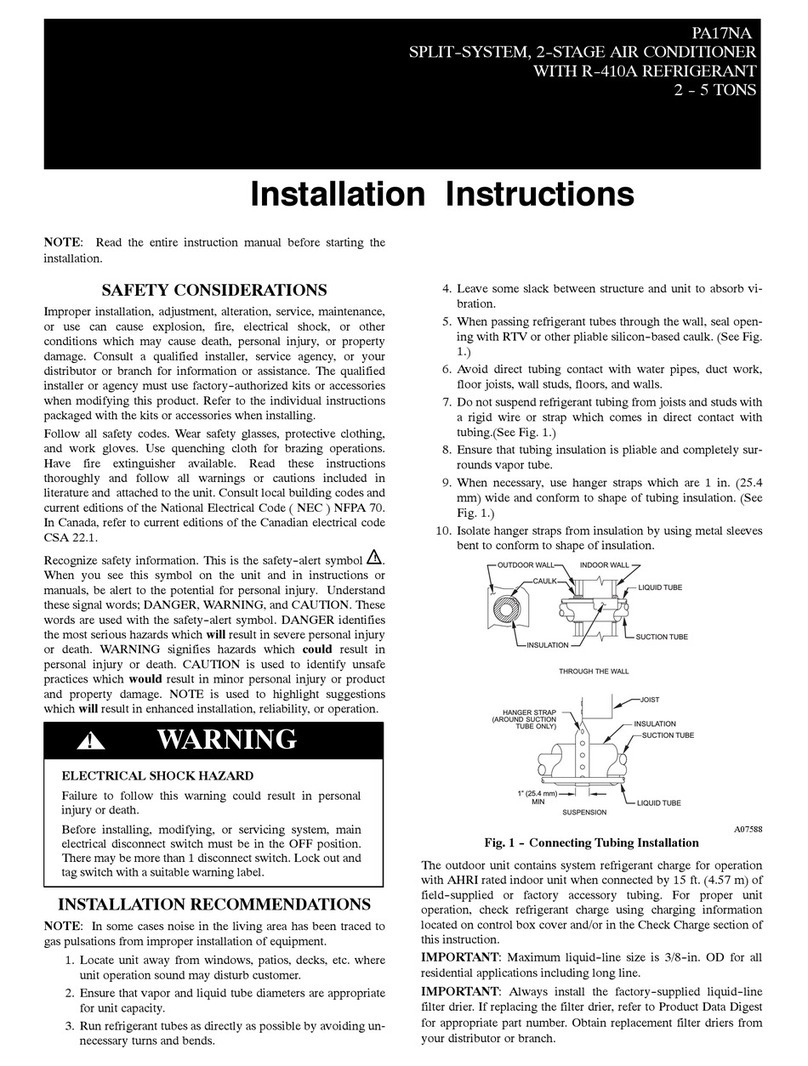
Carrier
Carrier PA17NA User manual

Carrier
Carrier 51 Series User manual
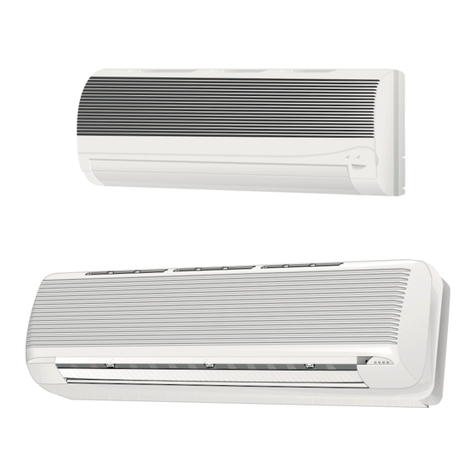
Carrier
Carrier 38BNB User manual
Popular Air Conditioner manuals by other brands

CLIMAVENETA
CLIMAVENETA a-CHD U-2T 606+2209 OPERATING AND INSTALLATION Manual

Midea
Midea EWK06CW5 user manual

Pioneer
Pioneer FAB Series installation manual

SPT
SPT WA-1511S user manual

Mitsubishi Electric
Mitsubishi Electric Mr.Slim MSZ-A24NA operating instructions

Mitsubishi Electric
Mitsubishi Electric PUHZ-RP50VHA4 Service manual
